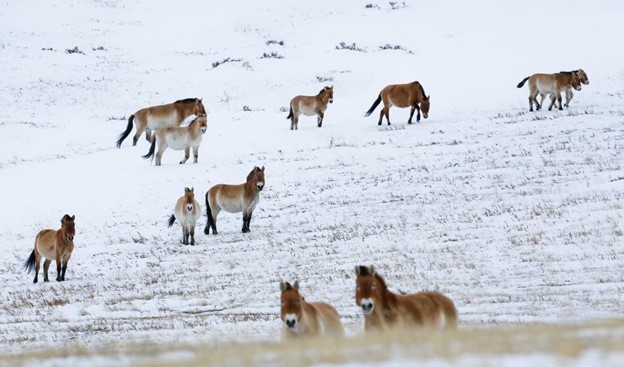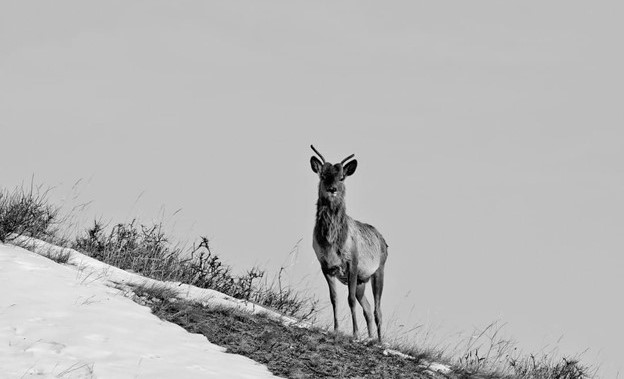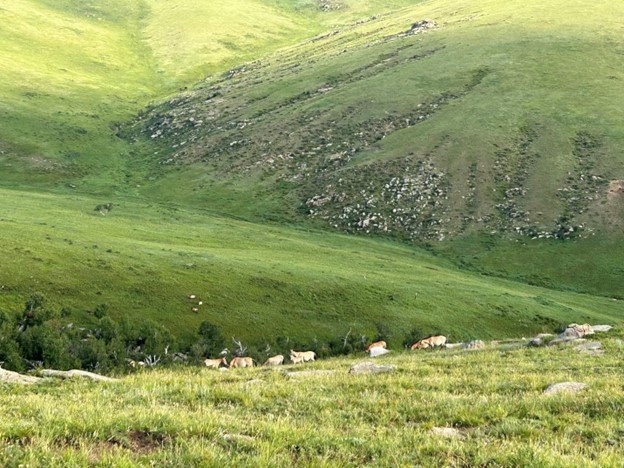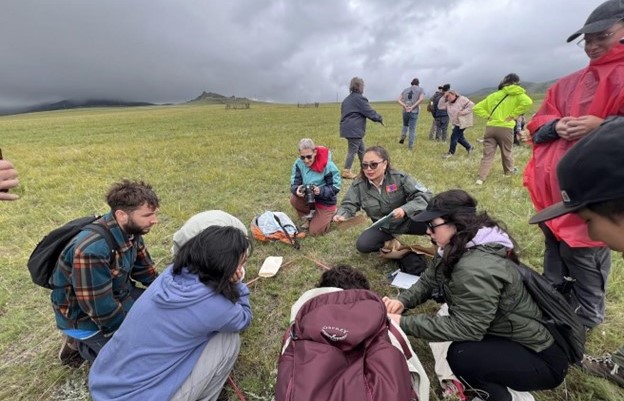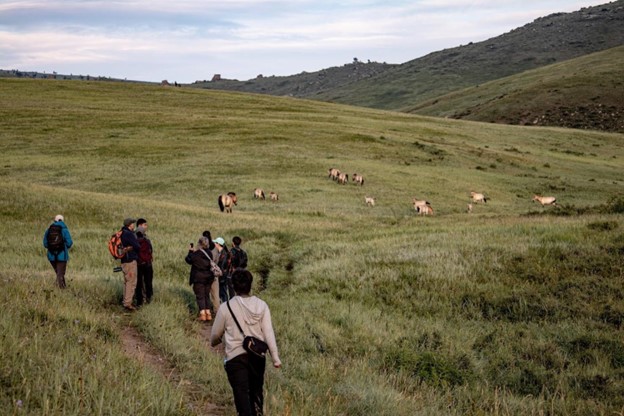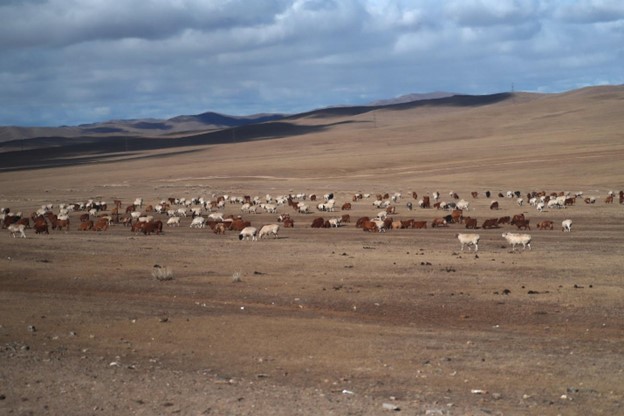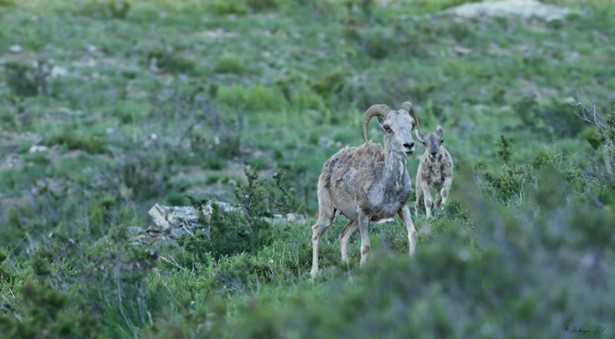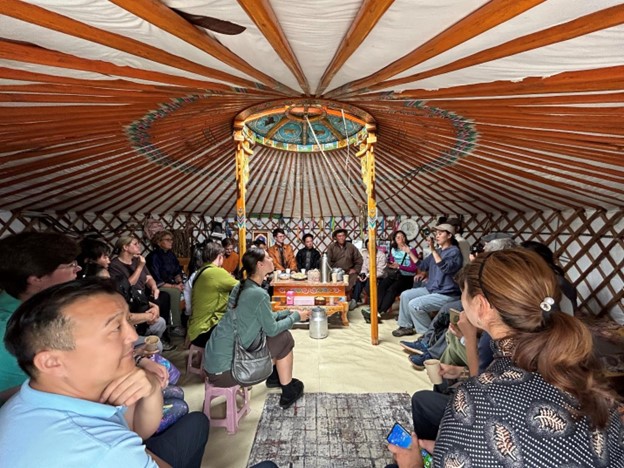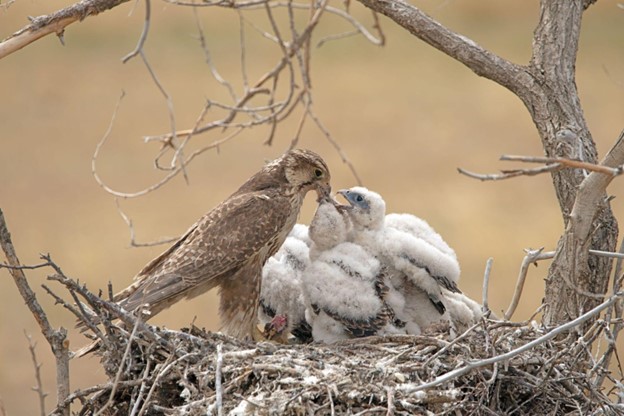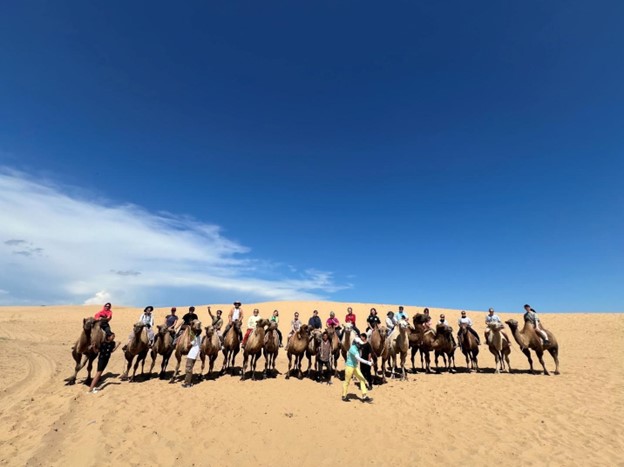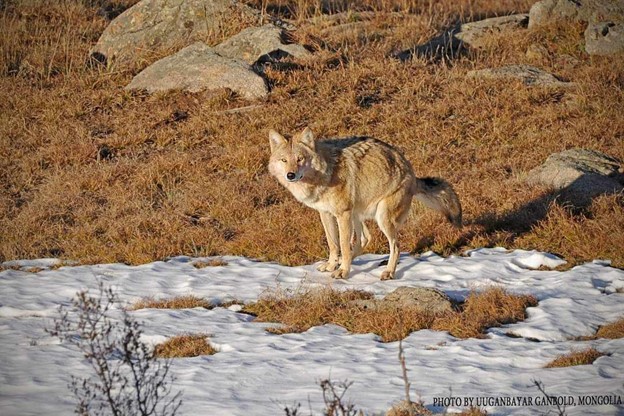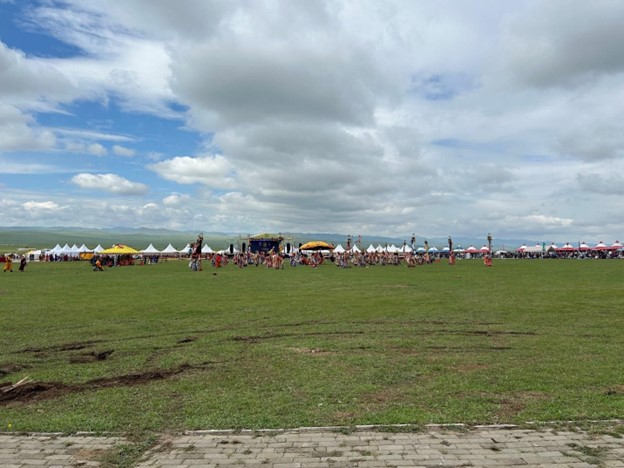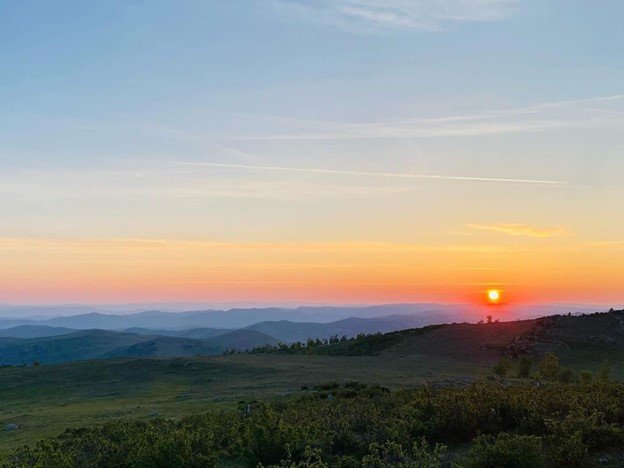Changing Biodiversity in Hustai National Park
14 Days ◦ 6 Instructors and Support Staff
No Prior Experience Required, All Instruction Will Be in English
Dates: July 21-August 3, 2025
Tuition and Fees: $3,500 (US/International), ₮1`200`000 (Mongolian)
Embark on an intensive two-week expedition immersing yourself in Mongolia's cutting-edge efforts to establish and manage specially protected areas, centered around the globally acclaimed Hustai National Park. The park is home to one of the few remaining thriving herds of the world's last truly wild horses, the Przewalski's horse. This immersive field course resonates with the urgent call from the International Union for Conservation of Nature, highlighting the imminent threat of land degradation primarily caused by agricultural and forestry practices. This degradation imperils landscapes, biodiversity, and essential ecosystem services like carbon sequestration. Hustai National Park serves as a pivotal bastion in combating these detrimental impacts, forming the nucleus of our investigation.
Course Overview
Embark on an immersive journey into the heart of Hustai National Park, a vibrant ecosystem renowned for its exceptional biodiversity and pioneering conservation efforts. Discover the park’s unique landscape, intricate management strategies, and innovative wildlife conservation approaches. Through hands-on fieldwork, participants will observe and track the iconic Przewalski’s horses, along with other fascinating species such as Mongolian elk, gazelles, Argali sheep, marmots, and gray wolves. Engage in essential ecological research activities, including vegetation biomass assessments, GIS-based habitat analyses, and long-term wildlife monitoring. Develop practical skills in data collection and analysis, contributing directly to the park’s conservation initiatives while gaining a deeper understanding of the challenges and solutions surrounding habitat preservation and species protection in one of Mongolia's most important protected areas.
This course will delve into the concept of community-based conservation, examining its significant role within Hustai National Park and its surrounding buffer zone. Participants will explore how changes in biodiversity influence local conservation efforts, particularly in relation to rangeland management. We will investigate how various factors exacerbates existing conflicts between herders and crop farmers over land and resource use in the buffer zone. Through a combination of theoretical learning and practical field experience, participants will gain a deeper understanding of the socio-environmental dynamics driving these conflicts. Field visits to conflict areas, along with interviews with local herders and crop farmers, will provide firsthand insight into the challenges faced by communities and offer a unique perspective on potential strategies for conflict resolution and sustainable management practices in the face of changes to biodiversity.
This expedition goes beyond scientific exploration, providing a deep cultural immersion experience. Participants will engage in a variety of cultural activities, from attending traditional festivals to visiting the Mongolian Natural History Museum. Participants will have the opportunity to experience the daily lives of herder families, participate in activities such as horse and camel riding, try their hand at traditional food preparation, and enjoy local games, offering a unique insight into Mongolia’s rich cultural heritage and ancient traditions.
This course is designed for academics specializing in protected area studies, professionals in natural sciences, administrators and managers of national and provincial parks, members of environmental and conservation NGOs, advocates, and passionate individuals eager to gain an insider's perspective on Mongolia’s global significance. Participants will explore the delicate balance between conservation, cultural heritage, and sustainable livelihoods within Mongolia's remarkable landscapes, while contributing to vital conservation efforts.
Anticipated Course Activities
Day 1
July 21
Day 2
July 22
Day 3
July 23
Day 4
July 24
Day 5
July 25
Day 6
July 26
Day 7
July 27
Day 8
July 28
Day 9
July 29
Day 10
July 30
Day 11
July 31
Day 12
August 1
Day 13
August 2
Day 14
August 3
Instructors

Dr. Tsermaa Nyamdavaa

Dr. Tserendulam Tseren-Ochir

Batzaya Tsogt

Amgalan Batsuuri

Dr. Usukhjargal Dorj

Byambadorj Purevdoo

Uuganbayar Ganbold
Testimonials



